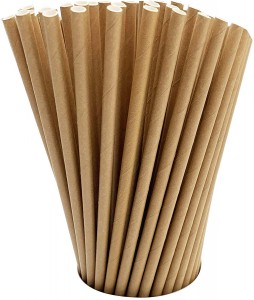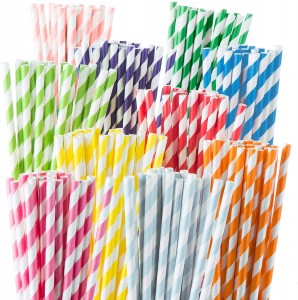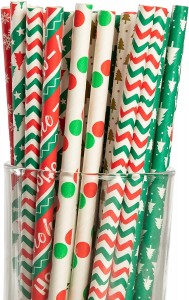Today, let’s talk about straws that are closely related to our lives. Straws are also used more in the food industry.
Online data shows that in 2019, the use of plastic straws exceeded 46 billion, the per capita consumption exceeded 30, and the total consumption was about 50,000 to 100,000 tons. These traditional plastic straws are non-degradable, because they are one-time use, they can be thrown away directly after use. all affect.
Straws are indispensable in catering, unless people change their lifestyles, such as: changing the way of drinking water to drinking water without straws; using non-straw such as suction nozzles, which seems to be more expensive; and using reusable straws , such as stainless steel straws and glass straws, it seems not so convenient. Then, the current better method may be to use fully degradable straws, such as biodegradable plastic straws, paper straws, starch straws, etc.
For these reasons, starting from the end of 2020, my country’s catering industry has banned the use of plastic straws and replaced non-degradable straws with degradable straws. Therefore, the current raw materials for the production of straws are polymer materials, which are degradable materials.
The degradable material PLA for making straws has the advantage of being completely degradable. PLA has good biodegradability, and it degrades to generate CO2 and H2O, which does not pollute the environment and can meet the needs of industrial composting. The production process is simple and the production cycle is short. The straw extruded at high temperature has good thermal stability and solvent resistance. The gloss, transparency and feel of the product can replace petroleum-based products, and all physical and chemical indicators of the product can meet the requirements of local food regulations. Therefore, it is widely used and can basically meet the needs of most beverages in the current market.
PLA straws have good moisture resistance and air tightness, and are stable at room temperature, but will automatically degrade when the temperature is higher than 45 °C or under the action of oxygen enrichment and microorganisms. Special attention should be paid to temperature during product transportation and storage. Long-term high temperature can cause deformation of PLA straws.
There is also a common paper straw we have. The paper straw is mainly made of environmentally friendly raw wood pulp paper. In the molding process, it is necessary to pay attention to factors such as machine speed and glue amount. , and adjust the diameter of the straw by the size of the mandrel. The entire production process of paper straws is relatively simple and easy to mass-produce.
However, the cost of paper straws is high, and the experience needs to be optimized. Food-compliant paper and adhesives should be used. If it is a paper straw with a pattern, the food products of the ink must also meet the requirements, because they all need to be in direct contact with the food, and the food quality of the product must be guaranteed. At the same time, it should suit many drinks on the market. Many paper straws become ruan and gel when exposed to hot beverages or acidic beverages. These are the issues we need to pay attention to.
Green life breeds green business opportunities. In addition to the straws mentioned above, under the “plastic ban”, more and more consumers and businesses have begun to pay attention to green straws, and I believe there will be more alternatives. Green, environmentally friendly and economical straw products will take off strongly against the “wind”.
Are degradable straws the best answer?
The ultimate purpose of the plastic ban is undoubtedly to promote more environmentally friendly alternative products by orderly prohibiting and restricting the production, sales and use of plastic products, ultimately fostering a new model of recycling, and reducing the amount of plastic waste in landfills .
With degradable plastic straws, is there no need to worry about pollution and uncontrolled use?
No, the raw materials of degradable plastics are corn and other food crops, and uncontrolled use will cause food waste. In addition, the safety of degradable plastic components is no higher than that of traditional plastics. Many degradable plastic bags are easy to break and are not durable. For this reason, some producers will add various additives, and these additives may have a new impact on the environment.
After the garbage classification is implemented, what kind of garbage does degradable plastic belong to?
In European and American countries, it can be classified as “compostable waste”, or allowed to be thrown together with food waste, provided that there is classified collection and composting at the back end. In the classification guidelines issued by most cities in my country, it is not recyclable.
Post time: Feb-21-2022







